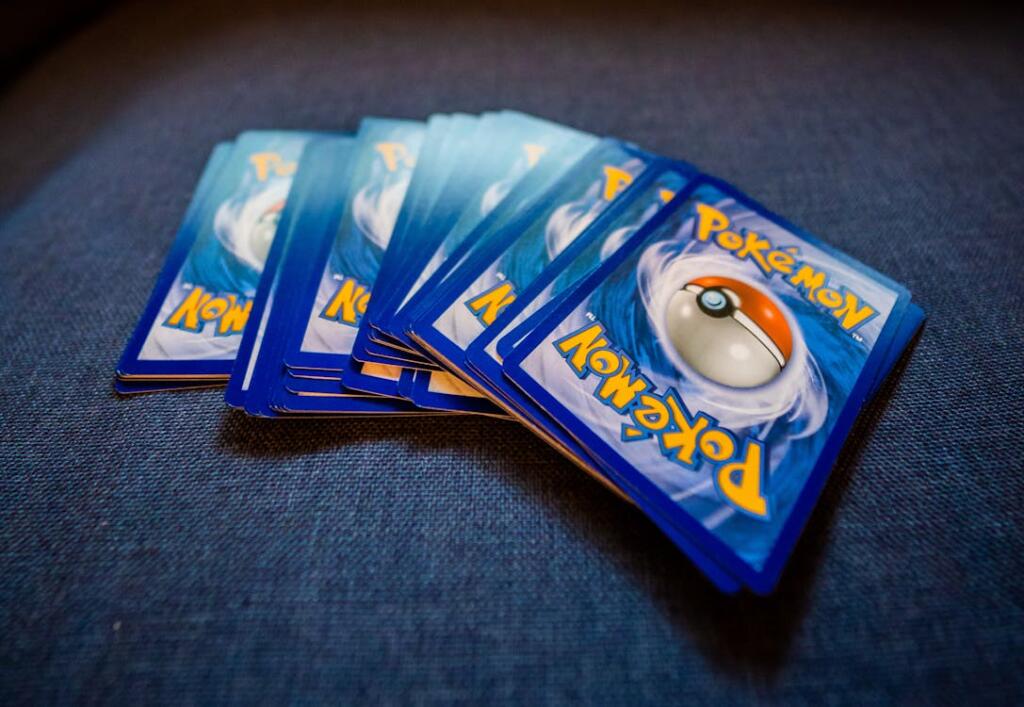Table of Contents
Pokémon cards have been a big part of gaming and collecting for years. Since they first came out in the ’90s, they’ve attracted players and collectors from all over the world. With lots of different cards and types, plus a huge fanbase, Pokémon cards have stayed popular and continue to be a big part of the Pokémon world.
okémon cards have captured the interest of players and collectors for decades. With a constantly growing selection of sets and special editions, they offer something for everyone: those who are interested in competitive play, nostalgia, or investment opportunities. Understanding the different types, values, and proper care methods can help you make the most of your collection.
The Pokémon Trading Card Game has grown significantly since its debut, with new expansions constantly introducing fresh mechanics and designs. Collecting these cards can be a rewarding experience, be it for fun or as a serious investment. With rare cards reaching impressive values, understanding what makes them special is important for any enthusiast. Additionally, keeping up with market trends and staying informed about upcoming releases can help collectors and players make informed decisions.
Top Pokemon Cards to Collect
Some Pokémon cards are highly sought after by collectors. The 1st Edition Charizard from the Base Set is one of the most famous, known for its rarity. The Pikachu Illustrator card, given to contest winners in the ’90s, is also incredibly valuable. Other rare cards like the Shining Charizard and special promotional cards can be sold for a high price, especially when they’re in great condition.
Gameplay
In the Pokémon Trading Card Game (TCG), two players face off with their 60-card decks. Players take turns using their Pokémon cards to attack and defend, while using energy cards to power up their Pokémon. The goal is to knock out your opponent’s Pokémon and take their prize cards. The winner is the first to draw all their prize cards. Success in the game comes down to building a strong deck and knowing when to make the right moves during a match.
Pokemon Card Types
There are a few different types of cards in the Pokémon TCG. The Pokémon cards represent the creatures you use in battle, showing things like their attacks, health points, and abilities. Energy cards are needed to power those attacks, and there are different types depending on the Pokémon’s elemental traits. Trainer cards help players with special abilities, like drawing extra cards or healing their Pokémon. Special Energy cards provide extra effects beyond regular energy cards.
Pokémon cards are divided into three main types: Pokémon Cards, representing creatures for battle; Trainer Cards, which offer strategic advantages; and Energy Cards, essential for using attacks. Understanding these different categories and features of the game is crucial to maximizing your chances of a great outcome—much like in other forms of entertainment, including the lottery. Visiting platforms like kenoresults.nz can provide valuable insights into Keno, a popular New Zealand lottery, much like how Pokémon collectors can benefit from researching to understand the different types of cards available.
In Pokémon, there is also the elemental type distinction: grass, fire, water. Within these categories, special editions like Holo, Full Art, Ultra Rare and Secret Rare add to their appeal. Collectors and players alike seek out cards with unique artwork, competitive value, or historical significance.
Pokémon Types
Each Pokémon card is assigned a type, which is usually based on their elemental traits. Common types include Fire, Water, Grass, Electric, and Psychic. These types come with strengths and weaknesses against other types, adding a bit of strategy to the game. For example, Water-type Pokémon beat Fire-types but are weak to Electric-types. When building a deck, knowing how to use type matchups is key to gaining the upper hand in battle.
Sets
Pokémon cards are grouped into sets, each one bringing in new Pokémon, special cards, and occasionally new game mechanics. Some of the most well-known sets are the Base Set, Jungle, Fossil, and more recent ones like Sword & Shield. Each set introduces new characters and sometimes new rules.
Card Collecting
Collecting Pokémon cards is a popular hobby for millions of people. Many collectors focus on rare or limited-edition cards, like holographic ones or cards featuring their favorite Pokémon. Over time, some cards have gone up in value, partly because of how much the Pokémon franchise has grown. With online marketplaces making it easier to buy and trade cards, the collecting world has become more accessible, whether you’re looking to add to your collection or sell some of your own.
How to Start Your Pokémon Card Collection
Starting a collection is straightforward with a few simple steps. First, determine whether your focus is gameplay, collecting, or investing. Starter Decks provide a balanced mix of essential cards, while Booster Packs and Elite Trainer Boxes offer expansion opportunities. Setting a budget helps maintain control over purchases, and trading with other collectors is a great way to acquire specific cards.
How to Determine Pokémon Card Value
The value of a Pokémon card depends on several factors. Rarity plays a significant role—cards classified as Promo, Full Art, or Secret Rare often hold higher worth. Condition is equally important, with professionally graded cards fetching premium prices. Market trends, demand, and limited print runs also influence a card’s value. Checking pricing guides and recent sales data gives an accurate assessment.
The Rarest and Most Valuable Pokémon Cards
Some Pokémon cards have gained legendary status among collectors due to their rarity and historical importance. There are rarity symbols to be found on cards: black circle for Common or black diamond for Uncommon. The Pikachu Illustrator Card, awarded in a 1998 art contest, is considered one of the most sought-after cards. Another highly valued card is the 1st Edition Shadowless Charizard, which commands high prices, particularly in mint condition. Trophy Pikachu Cards, distributed as tournament prizes, are among the rarest due to their limited availability. The Pre-Release Raichu, a card surrounded by speculation regarding its distribution, is another prized piece that collectors eagerly seek.
How to Spot Fake Pokémon Cards
Fake Pokémon cards are common, making authentication essential. Signs of counterfeit cards include incorrect fonts, misaligned borders, and poor print quality. Authentic cards have a distinct texture and specific light-reflective properties. The bend test, light test, and comparison with official references help in identifying genuine cards.
Competitive Play
Competitive Pokémon TCG involves tournaments where players bring their custom decks to battle it out. These events can range from local meet-ups to big international competitions. To succeed, players need to understand the game mechanics, build a solid deck, and be ready to adapt during matches. Many competitive players spend hours perfecting their decks and strategies, and the best players can earn great prizes and recognition.
Controversies
Like any popular market, the Pokémon card scene has had its share of controversies. One of the biggest issues has been the artificial inflation of card prices, especially for rare cards. There are also concerns about the authenticity and condition of cards being sold. The increasing popularity of Pokémon cards has led some people to treat them like financial assets, rather than collectibles, causing debates about how this affects the market. These shifts have raised questions about ethics in the collecting world and what it means for the value of cards in the long run.
Caring for Your Pokémon Card Collection
Proper storage and handling are key to preserving card condition. Card sleeves and toploaders protect against physical damage. Storing cards in a cool, dry environment prevents warping and fading. Organizing them in binders or storage boxes ensures they remain safe and accessible. High-value cards benefit from professional grading for long-term preservation.
Trading Cards
Trading is an integral part of collecting Pokémon cards. To ensure fair trades, research card values beforehand using platforms like TCGPlayer and eBay. Evaluating a card’s condition and authenticity helps prevent disputes. Attending trade events or connecting with other collectors online can lead to great trading opportunities.
The Future of Pokémon Cards
Pokémon cards continue to improve with new expansions, designs, and mechanics. Special anniversary releases and collaborations with artists bring fresh interest to the hobby. The introduction of Pokémon TCG Live is changing how players interact with their digital collections. As popularity remains strong, future sets will likely introduce innovative features to keep the game exciting.
FAQs
Are Pokémon cards actually worth anything?
Yes, some Pokémon cards can be worth a lot, especially rare ones like the 1st Edition Charizard or limited-edition cards. Their value depends on rarity, condition, and demand, and it can fluctuate based on collector interest and market trends.
What is the number 1 Pokemon card?
The Pikachu Illustrator Card is often considered the most valuable due to its rarity and record-breaking auction sales.
What are the four rarest Pokémon cards?
The Pikachu Illustrator, 1st Edition Shadowless Charizard, Trophy Pikachu Cards, and Pre-Release Raichu are among the rarest due to their limited availability and collector demand.
What Pokémon card is worth $300,000?
The Pikachu Illustrator card is worth around $300,000. Given to winners of a 1998 art contest in Japan, its rarity and unique history make it one of the most valuable Pokémon cards.





